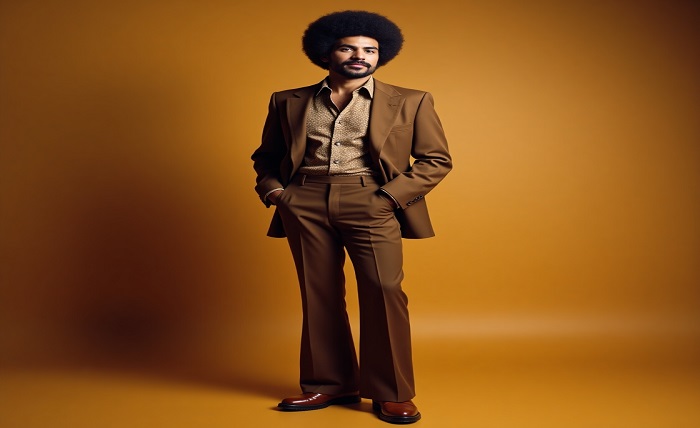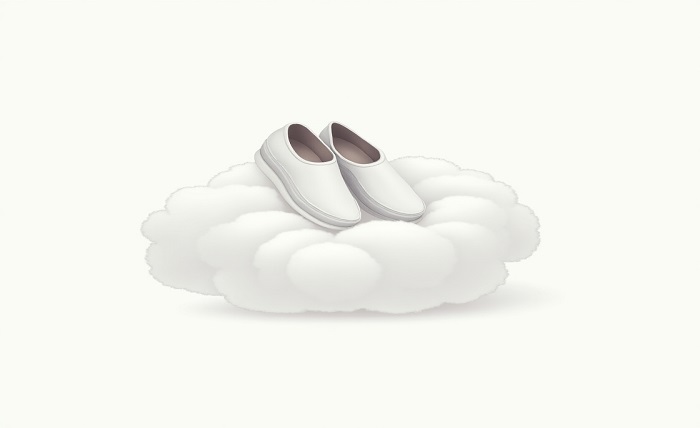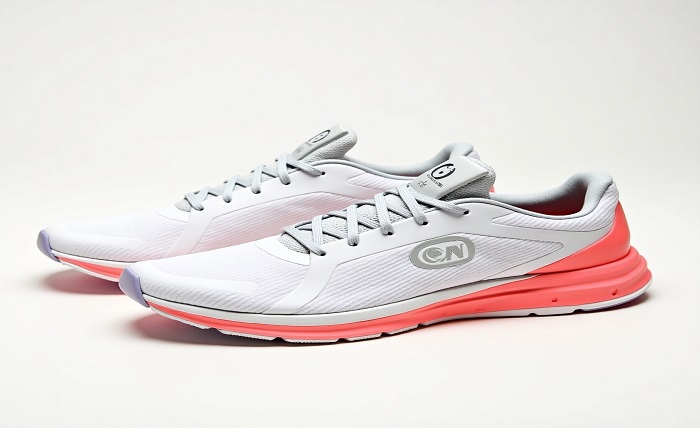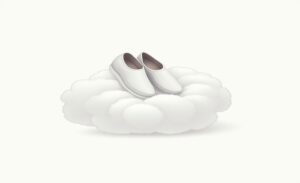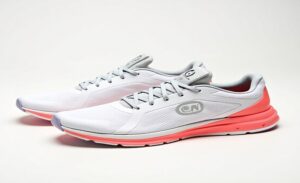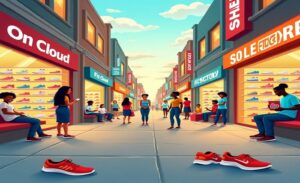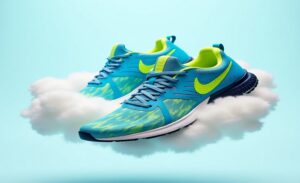Particularly in the realm of fashion, the 1970s were a decade marked by change, rebellion, and liberation. Men’s fashion in the 1970s reflected the lively movements and cultural changes of the era, from earthy tones and colorful patterns to polyester suits and bell-bottoms. Disco fever, the teenage counterculture, and the rise of rock ‘n’ roll opened the door for daring and avant-garde fashion choices that still influence people today.
This guide will walk you through the key trends, classic pieces, and significant personalities that characterized the 1970s, whether you’re a fan of vintage fashion or just interested in how the decade influenced contemporary menswear. Let’s delve further into the intriguing realm of menswear from the 1970s!
Table of Contents
ToggleThe Cultural and Social Landscape of the 70s: The Influence on Fashion
Prior to exploring the particular styles, it is crucial to comprehend the cultural context of the 1970s. Social movements, the emergence of feminism, the sexual revolution, and the flourishing music industry all contributed to the decade’s transformation in the 1970s. The way men dressed was significantly impacted by these cultural changes.
As the Vietnam War was drawing to a close, many people adopted a more laid-back and eclectic style as a result of their disenchantment with authority. Among the most important people in influencing men’s fashion were disco greats like the Bee Gees, David Bowie, and The Beatles. Young males were keen to imitate their daring, somewhat androgynous on-stage identities, which became intimately associated with fashion trends.
The Rise of the Disco Era: Glitter, Glam, and Extravagance
The disco movement was one of the key elements of men’s fashion in the 70’s mens fashion. Men gravitated toward nightclubs, where the pulsing beats and flashing lights demanded clothing that was as striking as the music. Style, glitz, and fun were key components of the disco aesthetic.
Important components included:
Polyester shirts were usually worn unbuttoned to the chest, allowing men to flaunt their gold chains or chest hair. They were frequently brilliantly colored or patterned.
Leisure Suits: The pinnacle of disco glam, these high-waisted, wide-lapelled suits were popular. They were fashionable, comfy, and ideal for the dance floor because they were made of synthetic materials like polyester.
Platform Shoes: Men adopted platform shoes, which can occasionally reach heights of two to three inches, to gain a little extra height.
Bell-Bottoms and Flared Pants: A Standout 70s Trend
Bell-bottoms, arguably one of the most recognizable items of the 1970s attire, were essential for any fashionable man. In order to create a unique and stylish silhouette, these pants were cut straight at the top before drastically flaring out at the bottom.
Fabric Options: Although denim and corduroy were popular materials for bell-bottoms, polyester and other synthetic materials were also frequently utilized.
The Impact of Popular Musicians: Bell-bottoms became a mainstay of the rock and roll style thanks to the rock stars Jimmy Page from Led Zeppelin and Jimi Hendrix.
How to Style: To contrast with the wide-legged silhouette, bell-bottoms were frequently worn with form-fitting shirts or jackets. Big eyeglasses and bulky belts were common accessories for this look.
The Power of Pattern: Bold Prints and Psychedelic Designs
The realm of prints and patterns was one area where the boldness of the 1970s was most noticeable. There were geometric patterns, floral themes, and psychedelic designs everywhere. Not only did these striking patterns appear on shirts and coats, but they also appeared on pants, scarves, and even socks.
Paisley: Often seen on scarves, ties, and shirts, paisley patterns were a hallmark print of the 70’s mens fashion.
Abstract and Geometric Prints: Popularized by the psychedelic movement of the late 70’s mens fashion, geometric prints were used on t-shirts and suits alike.
flowery Shirts: To highlight a carefree and fun attitude, many men adopted flowery motifs in their shirts, which were frequently worn with the sleeves rolled up.
Punk Rock’s Influence: DIY Mentality and Rebellious Style
Punk rock became a significant cultural force by the late 70’s mens fashion conventions in both music and fashion. This rebellious style was typified by bands like The Clash and The Sex Pistols, and men in cities adopted a do-it-yourself approach to clothing.
Leather Jackets: Black leather jackets with band patches, studs, and zippers were the quintessential punk style.
Ripped denim trousers and shredded t-shirts became essential pieces since the punk style was centered on being rebellious and unconventional.
Mohawks and Dye: Men had jagged cuts, brightly dyed hair, and mohawks, demonstrating that hairstyles were as daring as the clothing.
Bohemian and earthy tones in the Hippie Movement
The hippie movement, which started in the late 1960s, continued throughout the 70’s mens fashion. Men who adopted the hippie style preferred loose-fitting, flowing clothing in earthy hues, and the movement was all about freedom, love, and peace.
Flared Jeans: Those embracing a hippy aesthetic frequently wore flared jeans, even if bell-bottoms were still very popular. Long, flowy shirts were frequently worn with these pants.
Tie-Dye: Often in vivid, swirling hues, tie-dye shirts were a defining feature of the hippie style.
Natural Fabrics: A back-to-nature mentality was reflected in the popularity of natural materials like cotton, linen, and hemp among men dressed in hippie-inspired apparel.
Accessories and Beads: To finish the ensemble, rings, bracelets, and necklaces crafted from organic materials like stone and wood were also used.
Conclusion
Men’s fashion underwent a transformation in the 1970s. The 1970s saw a wide range of daring and frequently unorthodox fashion styles. Men had more alternatives than ever before, ranging from the sophistication of tailored suits and the laid-back vibes of the hippie movement to the glitz of disco and the rebelliousness of punk rock. Social and cultural changes, such as those in politics, music, and youth movements, had an impact on these styles.
The spirit of the 70’s mens fashion is still very much alive and well, as evidenced by the numerous trends that have returned from the decade. 70s fashion is still a creative inspiration, whether you’re adding a few old items to your closet or going all out with a retro style.
FAQ
How can I include pieces from the 70’s mens fashion to my current wardrobe?
Using antique items such as platform shoes, wide-legged pants, and patterned shirts is a good place to start. You may readily locate modern things with a retro touch because modern fashion has embraced these themes.
Did the 70’s mens fashion any significant fashion icons?
Indeed! Rocker Mick Jagger, David Bowie, and John Travolta (of Saturday Night Fever) were all major influences on 70’s mens fashion. Their distinct looks—from disco to rock ‘n’ roll to glam—helped shape the decade’s fashion.
What effects did the 70’s mens fashion have on men’s fashion?
With the introduction of bolder, more experimental styles, the 1970s contributed to the dismantling of many fashion traditions. Casual, loose clothing and a more individualized, individualistic attitude to style were popular during this time.
Which items are necessary for a look influenced by the 70’s mens fashion?
Wide-brimmed hats, platform shoes, printed shirts, flared jeans, and velvet coats are essential accessories. You can finish off your 70’s mens fashion ensemble by adding accessories like a hefty belt or large sunglasses.

